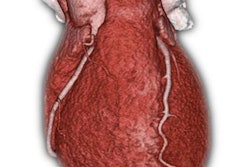Sunday, November 27 | 11:35 a.m.-11:45 a.m. | SSA21-06 | Room S404AB
Researchers from the University of California, Los Angeles designed a project to measure effective and organ radiation doses in lung cancer screening studies using tube current modulation. They found very low doses overall.While there are existing estimates of patient radiation dose from low-dose lung cancer screening with CT, they are based on the National Lung Screening Trial (NLST), which used only fixed tube current techniques for all of its CT exams, explained Michael McNitt-Gray, PhD, professor of radiological sciences.
"With modern scanners, automatic exposure control systems (and specifically tube current modulation, or TCM) are widely used," he wrote in an email to AuntMinnie.com. "Therefore, we wanted to update the patient dose estimates to reflect the use of TCM techniques."
To accomplish this, they used Monte Carlo simulation techniques to model low-dose lung cancer screening studies performed with tube current modulation, and they estimated dose to all organs and even effective dose. This was performed for patient models representing a variety of patient sizes.
"We found that all of the scans resulted in effective doses below 1.5 mSv, regardless of the size of the patient," McNitt-Gray said. "We also found relationships between organ doses and effective doses based on patient size and scanner output that can be helpful in estimating doses to patients undergoing these scans in the clinic."



















